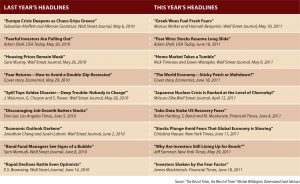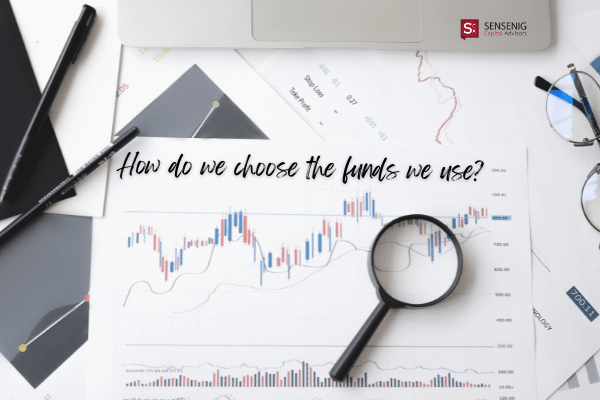As advisors in the field of wealth management, we are charged to act prudently on behalf of our clients. This responsibility involves many things related to the management of portfolio assets. As our clients know, we stress the importance of staying the course in difficult market environments, simply because it works. As of late, we tend to sound like a broken record on this topic. However, study after study has shown the negative effects of trying to time the market. For many investors, market conditions like what we are experiencing now cause their emotions to often get the best of them. But selling in market drops and buying too late in market recoveries is the classic story of the erratic investor with no plan and high hopes of the next best fad. Discipline is paramount in prudent investing and remains a vital aspect of one’s long-term wealth planning.
Why fight a losing battle?
So often, the most important factor between investment success and failure is a lack of discipline. More directly stated, an investor’s main problem may just be themselves. In a recent study conducted by Ledbury Research of more than 2,000 affluent people around the world, Ledbury confirmed the suspicion that the most sophisticated, well-informed people are the most prone to try and outwit the market. Forty percent of the respondents even admitted their tendency to try and time the market, looking for a quick buck. The study goes on to mention, “On the face of it, you might think that those who were trading more actively would be more experienced, sophisticated and able to control themselves but that seems not to be the case—trading becomes addictive.” Because of this hyperactivity and loss of self-control, people end up making bad investment decisions.
And, as we know from a famous quote by Warren Buffett, “We’ve long felt that the only value of stock forecasters is to make fortune tellers look good. Even now, I continue to believe that short-term market forecasts are poison and should be kept locked up in a safe place, away from children and also from grown-ups who behave in the market like children.”
What is the moral of this story? Investors should be skeptical of their ability to predict future events and even more skeptical of their ability to predict how other investors will react to them. After all, for the twelve-month period ending May 31, 2011, investors had been experiencing a tremendous bull market despite the news headlines in the chart below (click to enlarge):
Thoughts to keep in mind
From time to time, a friend might ask if it’s prudent to shift investments to cash and wait until “things blow over” to get back in the market. For us, the red flag goes up, but nonetheless we provide our standard advice of staying the course. You can likely surmise our guidance is almost certainly NOT what the person inquiring wanted to hear; most people are looking for a near-term strategy, something that will satisfy their inherent urge to do something—anything—to make themselves feel better in a challenging market. It’s human nature: fight or flight. Discipline, however, is the secret weapon that so many ignore but that often leads to long-term investment success.
So remember to exercise good practice and distance yourself from the daily noise of the financial media. It’s your discipline that gets you through the difficult times. Take a deep breath and read the Serenity Prayer with thoughtful optimism: “God grant me the serenity to accept the things I cannot change; courage to change the things I can; and wisdom to know the difference.”
Dealing with volatility
As to what might happen tomorrow, next week, or next month is anyone’s guess, and no one knows for sure. That is the nature of risk. If you are an investor, you should already have a well thought out plan in place that assesses your ability, willingness, and need to take risk. If you’re absent a plan, make one. The time to plan for a crisis is long before you find yourself in one. In the interim, we share a few points and suggest you keep them in mind to make living with this volatility more bearable. This from Jim Parker of Dimensional Fund Advisors in his article “Living with Volatility”:
-
Remember that markets are unpredictable and do not always react the way the experts predict they will. The recent downgrade by Standard & Poor’s of the U.S. government’s credit rating, following protracted and painful negotiations on extending its debt ceiling, actually led to a strengthening in Treasury bonds.
-
Quitting the equity market at a time like this is like running away from a sale. While prices have been discounted to reflect higher risk, that’s another way of saying expected returns are higher. And while the media headlines proclaim that “investors are dumping stocks,” remember someone is buying them. Those people are often the long-term investors.
-
Market recoveries can come just as quickly and just as violently as the prior correction. For instance, in March 2009—when market sentiment was last this bad—the S&P 500 turned and put in seven consecutive months of gains totaling almost 80 percent. This is not to predict that a similarly vertically shaped recovery is in the cards this time, but it is a reminder of the dangers for long-term investors of turning paper losses into real ones and paying for the risk without waiting around for the recovery.
-
Never forget the power of diversification. While equity markets have had a rocky time in 2011, fixed income markets have flourished—making the overall losses to balanced fund investors a little more bearable. Diversification spreads risk and can lessen the bumps in the road.
-
Markets and economies are different things. The world economy is forever changing, and new forces are replacing old ones. As the IMF noted recently, while advanced economies seek to repair public and financial balance sheets, emerging market economies are thriving. A globally diversified portfolio takes account of these shifts.
-
Nothing lasts forever. Just as smart investors temper their enthusiasm in booms, they keep a reserve of optimism during busts. And just as loading up on risk when prices are high can leave you exposed to a correction, dumping risk altogether when prices are low means you can miss the turn when it comes. As always in life, moderation is a good policy.
Parker brings to light several excellent points, which sound reasonable enough—but we also need to recognize the discipline required to stay the course in highly volatile markets. No investor wants to see their asset values erode, even if just temporarily. As mentioned previously, volatility can work to one’s advantage since these historically sharp swings have cancelled each other out to produce gentle upward trends for equities over time. If this pattern continues, volatility provides an opportunity to periodically buy asset classes at favorable prices, keeping your risk tolerance in check.
One way to take advantage of this is through periodic rebalancing of investment holdings. For example, one might decide upon a target asset allocation of 75% equity / 25% fixed income. During volatile times, these percentages will deviate by some amount. Rebalancing your portfolio back to the target allocation is a disciplined method for managing the overall level of risk. One is essentially buying certain asset classes when they are cheaper and selling certain asset classes when they are more expensive. Hence, buy low—sell high!
Volatility is usually defined by the fluctuation of returns around the arithmetic average return of the investment, more commonly known as standard deviation. The chart below (click to enlarge) by Morningstar illustrates this point. Risk, or volatility, is shown on the horizontal axis while compound annual returns are shown on the vertical axis. Note the standings of the various asset classes. More highly volatile asset classes have been accompanied by higher returns during the 85-year period, and vice versa for the lower risk classes.
The goal, of course, is to select an asset allocation that an investor is comfortable with and then maintain the balance over longer periods of time. All of this shows that while risk is never eliminated, it can be managed so as to help investors meet their long-term goals. These sound investment principles apply if one is accumulating assets during gainful employment or taking distributions in their retirement years.





